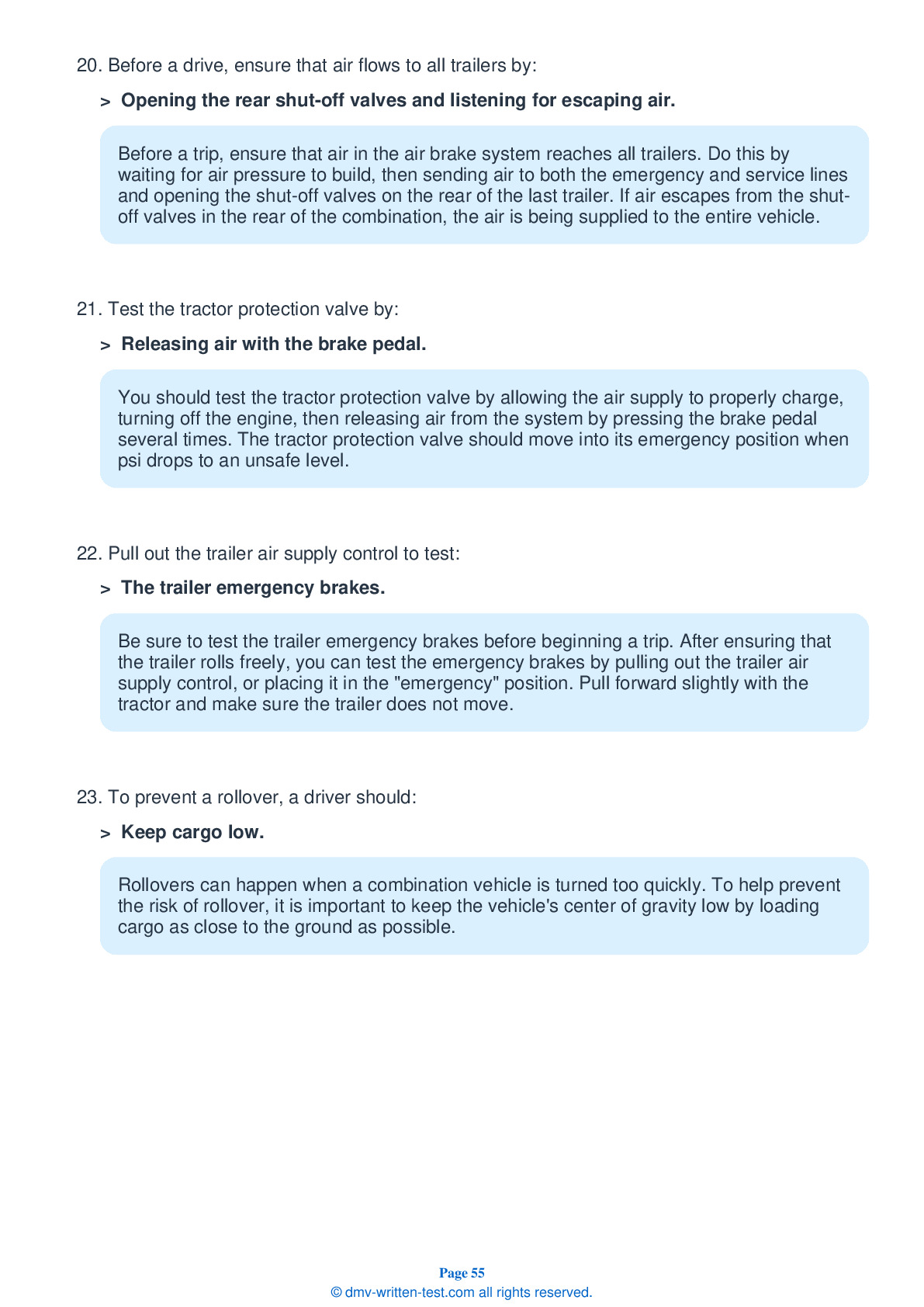Air Brakes
This endorsement is required for driving a vehicle with air brakes. To receive this endorsement, applicants must pass a written test. The test consists of 25 multiple choice questions. Each question has two, three or four possible answer choices. To pass, the applicant must answer at least 20 questions correctly. Test questions come from the Minnesota Commercial Driver’s Manual. Questions come from the chapters covering: Air Brakes and Combination Vehicles. The Air Brakes endorsement may be used with the Class A, B or C CDL.
Number of Question
Passing Score
1. Which of the following types of vehicles is most prone to the “crack-the-whip" effect?
Explanation
Double and triple combinations are the most vulnerable to turning over as a result of the "crack-the-whip" effect.
2. Why do large vehicles use air brakes?
Explanation
Air brakes are an effective and safe way of stopping large and heavy vehicles, as long as they are maintained and used properly.
3. When driving while pulling trailers, you should:
Explanation
You should always steer gently and smoothly while pulling a trailer. Making sudden steering moves could cause the trailer to tip over.
4. To prevent a rollover, cargo should be:
Explanation
To reduce the risk of rollover, the weight of cargo in a trailer should be centered and spread out as much as possible. The weight of the cargo should also be kept as low to the ground as possible.
5. Do not use the parking brake when parking if:
Explanation
A parking brake should not be used if the vehicle's brakes are very hot from use on a steep downgrade or if the brakes are very wet and temperatures are freezing. Using the parking brake when brakes are hot could cause damage to the brakes, and using the brakes when they are wet in freezing weather may cause the brakes to ice up, rendering the vehicle immobile.
6. Rollovers are most likely to happen when:
Explanation




